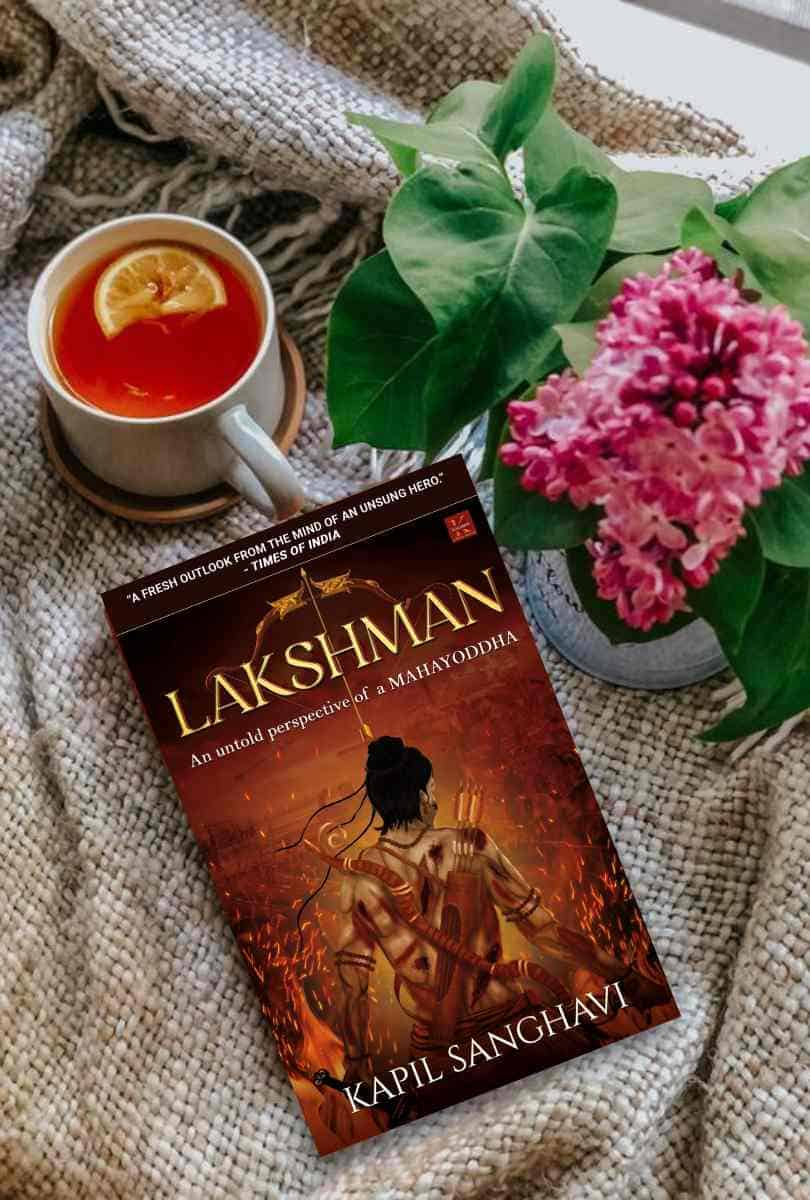PLOT: 4/5 CHARACTERS: 4/5 CLIMAX: 4/5 WRITING STYLE: 4/5 ENTERTAINMENT QUOTIENT: 4/5
Only the timid and the weak leave things to destiny (daivam) but the strong and the self-confident never bank on destiny or luck (bhagya).“
– Lakshman, Valmiki Ramayana 2.23.16
Inspired by the Ramayana after an encounter with it at a young age, Lakshman: An Untold Perspective of a MAHAYODDHA is dedicated to the author’s favourite character Lakshman, the devoted brother of Shri Ram in the great epic of Ramayana.
The noble prince
Lakshman is not only the epitome of goodness manifested in the form of a supportive brother but also an honest, trustworthy, and inspiring individual who is a gem of a person and someone that has played the foil character for Ram, although he is equally dedicated to the cause of humility through being a disciple and follower of his older brother Ram.
Sanghavi pinpoints this fact that despite being such a noble prince, he chose simple living under the shadow of his brother Ram. Despite his lack of desire for any royal position, fame, or kingdom, Sanghavi draws light on the fact that had the character of Lakshman not been around or been absent from the epic, then Ramayana would not have been what it is i.e., it would not hold that high significance and importance.
Lakshman, a pivotal character
This only means that Lakshman is a pivotal character without whom the story is incomplete. Though there may be several portrayals of Lakshman as a great warrior and ideal sibling, there is very little literature available on the inner workings of Lakshman’s mind.
In Lakshman: An Untold Perspective of a MAHAYODDHA, Sanghavi sheds light on showcasing the inner workings of his mind, his individuality, his perspective, and his emotional turmoil. From Sanghavi’s point of view, Lakshman Gaatha is not just a story full of didactic and inspiring anecdotes but a bounty of timeless answers and keys to life’s questions and locks.
Not just mythology
Sanghavi also argues that Ramayana is not just a mythological event but also a historical event and this book is the outcome of a new interpretative perspective that is fresh and an attempt to inspire readers to go back to their basics, connect with their roots, and understand the message of peace, sacrifice, and discipline of living life based on principles and values that can guide the masses towards inner tranquillity.
Let’s talk about the writing
In terms of structure, Lakshman: An Untold Perspective of a MAHAYODDHA follows through the content within about 333 pages and can be said to be on the lengthier side. Individual chapters are also quite long but each chapter has a look into a new phase in the life of Lakshman.
It has a prologue that opens into the first chapter that draws on Lakshman’s take on a contest between him and a character called Guha which is a sword fight that Lakshman wins. It is from this instance that the character of Lakshman in terms of his cordial ties with his opponent, and his spirit of sportsmanship, kindness, and gentleness are evident.
This is seen through the mention of dialogues that reflect the virtue of respect that he had for elders and just about everyone around, it also reflects his humility and his desire to learn and improve.
The novel is relayed in a first-person narrative point of view. There are some non-English words used such as peepal, puja, bhaiya, mantra, chillum, kamandal, rakshasa, dhotis, Sahivi trinetra tilak, or yajna, which are not difficult to grasp for the average Indian reader who is familiar with Hindu culture but may be tough for international readers.
Hence, a glossary or list of non-English words used is provided at the end of the book, but another list of characters (with their background details) is something that can be added in a later edition to this book to ease the reading experience. This will make not only Lakshman but also the entire epic of Ramayana more accessible to the beginner or intermediate-level reader (especially one who is not well acquainted with the epic or is not an average reader of mythology).
But at the moment, this edition serves the noted purpose of the author and is effective in driving home the richness of the epic of Ramayana. This book may be called mythological fiction due to its new manner of storytelling but it is important to highlight that it does not fictionalize in any non-factual way.
This means that the factual authenticity of the events that unfolded in the life of Lakshman as a character in the Ramayana is kept intact and incidents related to him are moulded only with the aim to bring out his qualities that can be imbibed and learnt from.
This helps to highlight him but with a certain purpose that is beyond just idealistic aspiration or blandly informative but effectively educational. The book is also well arranged in terms of the content display like each scene change is denoted by a graphic art of an arrow flying towards the left.
Nonetheless, the writing coherently structures the story of Lakshman in his own words, through his emotions, his understanding, and his senses. The multiple climaxes chart the graph of his journey as a noble warrior adhering to a simple lifestyle.
On the whole, Lakshman: An Untold Perspective of a MAHAYODDHA is highly engaging, and offers something very novel in terms of content and writing style, one that attempts to uncover what is known but never put down in simple, understandable terms. No doubt, it is a book that has a brilliantly done cover and equally engaging writing to match, making it worthy of being devoured.
Can’t wait to read it? Buy your copy of Lakshman: An Untold Perspective of a MAHAYODDHA now.
